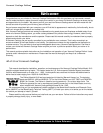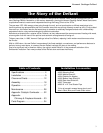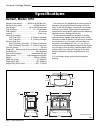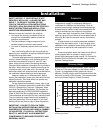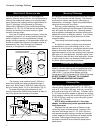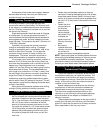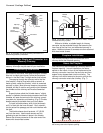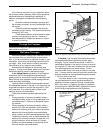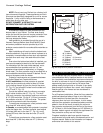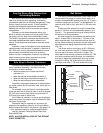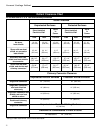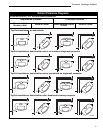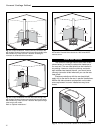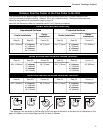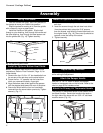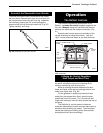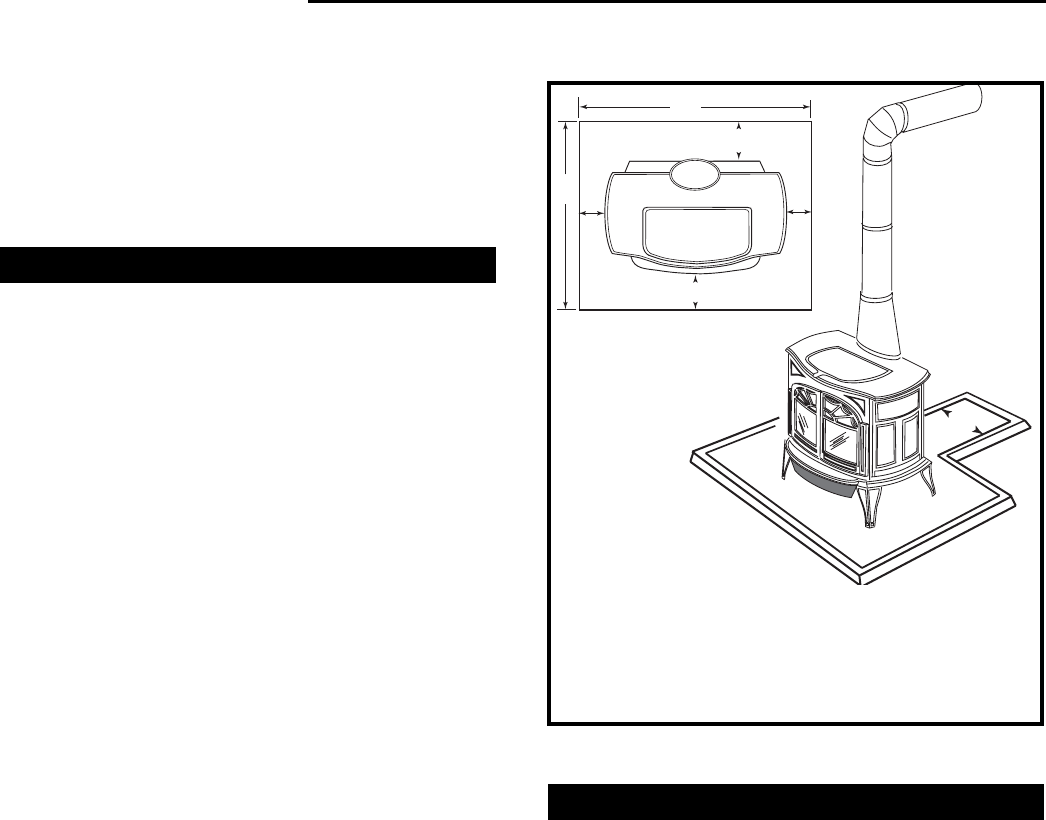
10
Vermont Castings Defiant
NOTE: Do not vent your Defiant into a factory-built
(zero-clearance) fireplace. These appliances and their
chimneys are specifically designed as a unit for use as
fireplaces. It may void the listing or be hazardous to
adapt them for any other use.
DO NOT CONNECT A DEFIANT TO ANY AIR
DISTRIBUTION DUCT OR SYSTEM.
Floor Protection
A tremendous amount of heat radiates from the
bottom plate of your Defiant. The floor area directly
under and around the stove will require protection from
radiant heat as well as from stray sparks or embers
that may escape the firebox.
Heat protection is provided through the use of a
Vermont Castings Bottom Heat Shield #1905. Spark
and ember protection must be provided by a floor
protector constructed with noncombustible materials as
specified.
Most installations will require that the bottom heat
shield be attached. Only when the stove is placed on a
completely noncombustible surface such as unpainted
concrete over earth may it be used without the heat
shield.
Even when the bottom heat shield is installed, you
must provide special protection to the floor beneath.
For installation with the heat shield attached, use a
noncombustible floor protector such as 1/4” non-
asbestos mineral board or equivalent, or 24 gauge
sheet metal. The floor protector may be covered with a
noncombustible decorative material if desired. Do not
obstruct the space under the heater.
Protection requirements vary somewhat between
the United States and Canada as follows:
In U.S. installations, the floor protector is required
under the stove and must extend at least 16 inches
(not including the ash lip) from the front of the stove
('F', Fig. 10), and at least 6 inches from the sides and
rear ('D' and 'E', Fig. 10).
It must also extend under the chimney connector
and 2 inches to either side ('C', Fig. 10). For the 8"
(200 mm) connector, the protector must be a minimum
of 12" (300 mm) wide. For the 6" (150 mm) connector,
the protector must be 10" (250 mm) wide. The protec-
tor must be centered under the connector.
To meet these requirements, a floor protector must
be at least 42" wide and 43" deep.
In Canada, a noncombustible floor protector is required
under the heater also. The floor protector must extend
18 inches (460 mm) to the front ('F', Fig. 10), and 8
inches (203 mm) from the sides and rear ('D' and 'E',
Fig. 10).
To meet these requirements, a floor protector must
be at least 46" (1168 mm) wide and 47" (1194 mm)
deep.
Fig. 10 Required floor protector dimensions.
C
A
B
D
E
E
F
ST495/496
U.S. Canada
A. 42” 46” (1168mm)
B. 43” 47” (1194mm)
C. 12” 12” (300mm) 8” Connector
10” 10” (250mm) 6” Connector
D. 6” 8” (203mm)
E. 6” 8” (203mm)
F. 16” 18” (460mm)
Floor Protection for Fireplace Installation
Do not assume that your fireplace hearth is completely
noncombustible. Many fireplace hearths do not satisfy
the “completely noncombustible’ requirement because
the brick or concrete in front of the fireplace opening is
supported by heavy wood framing. Be cause heat
passes readily through brick or concrete, it can easily
pass through to the wood. As a result, such fireplace
hearths can be a fire hazard and are considered a
combustible floor.
For all fireplace installations, follow the floor protection
guidelines described above. Keep in mind that many
raised hearths will extend less than the required
clearance form the front of the heater. In such cases,
sufficient floor protection as described above must be
added in front of the hearth to satisfy the minimum
floor protector requirement from the front of the stove:
16” (410mm) in the United States and 18” (460mm) in
Canada. Hearth rugs do not satisfy the requirement for
floor protection as they are not fire proof.
Fireplace installation also have special clearance
requirements to the side walls, side decorative trim and
fireplace mantel. Refer to the information on fireplace
and mantel trim shields in this section.



